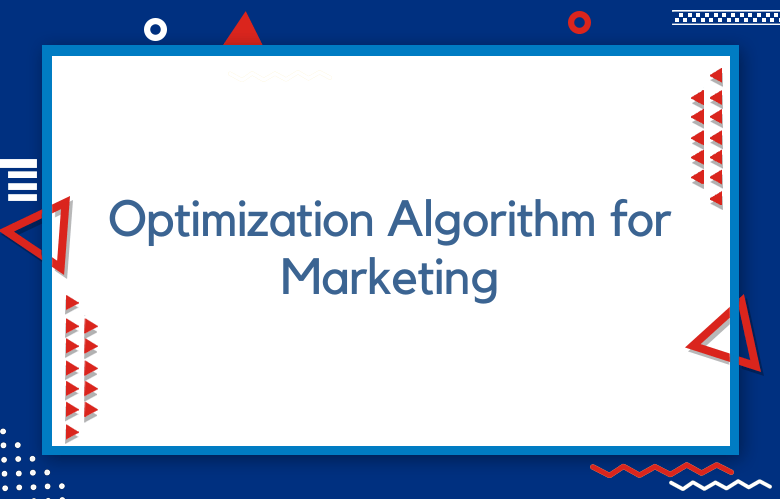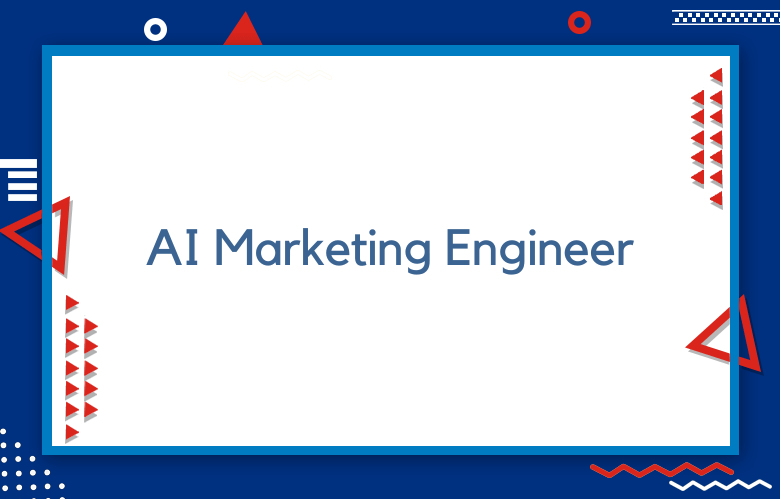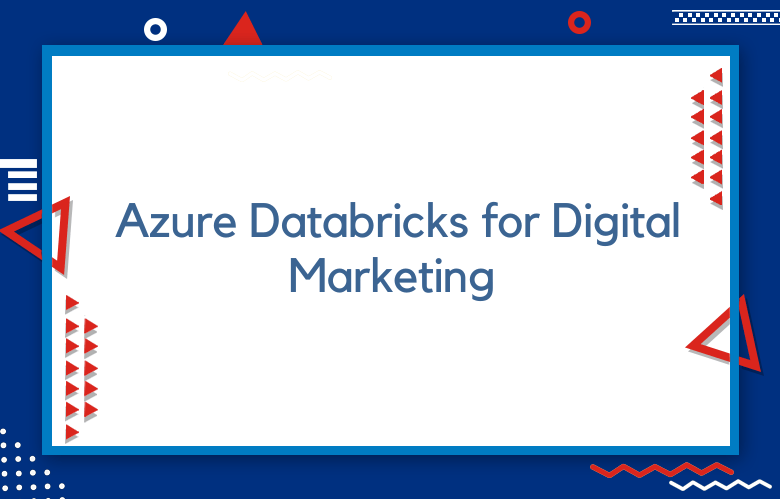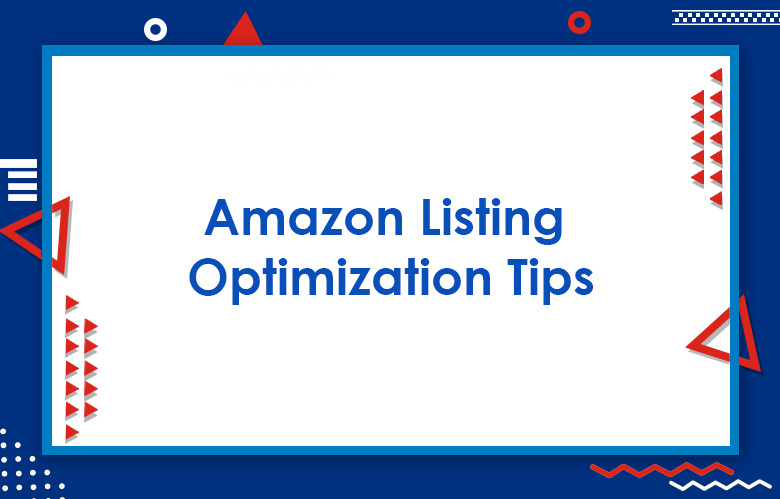Deep Learning: The Adam Optimization Algorithm for Marketing

Deep learning has revolutionized the field of machine learning with its ability to learn representations of data automatically.
This has led to the development of powerful optimization algorithms to help businesses improve their marketing strategies. One such algorithm is the Adam optimization algorithm.
This algorithm is designed to help optimize parameters in a deep-learning model and is particularly useful for marketing tasks. We will explore the Adam optimization algorithm and its role in marketing.
The world of marketing has transformed exponentially in the past few years. The industry has progressed from traditional marketing methods to data-driven digital marketing practices.
One of the most exciting advancements in digital marketing has been using deep learning algorithms. Deep learning has helped marketers analyze data more efficiently and make better decisions based on that data.
One such algorithm that has garnered a lot of attention is the Adam Optimization Algorithm. Let’s dive deeper into the Adam optimization algorithm and how it can help marketers.
What is Adam’s Optimization Algorithm?
The Adam optimization algorithm is an adaptive optimization algorithm that can optimally adjust a machine learning model’s learning rate based on the gradient’s magnitude.
This algorithm uses two other methods, namely stochastic gradient descent and root mean square propagation, to perform these adjustments. The Adam algorithm is handy for optimizing deep neural networks with many parameters, as it can optimize them all at once.
The Adam optimization algorithm is a stochastic gradient descent optimization algorithm that is commonly used in deep learning models.
The algorithm is designed to calculate an adaptive learning rate for each parameter of the model, which means that it adjusts the learning rate based on the magnitude of the gradient.
The adaptive learning rate allows the optimization algorithm to converge faster and avoid getting stuck in local minima.
The name “Adam” stands for Adaptive Moment Estimation, which refers to how the algorithm estimates the mean and variance of the gradients.
The Adam Optimization Algorithm for Marketing
The Adam optimization algorithm for marketing is a powerful tool that enables marketers to optimize their campaigns and achieve better results. It is based on the well-established Adam optimization algorithm that has been successful in many other fields, such as machine learning and deep learning.
The Adam optimization algorithm is designed to improve the optimization process by combining two essential techniques: adaptive gradient descent and momentum-based optimization.
Adaptive gradient descent allows the algorithm to adjust the step size for each parameter individually, making it more efficient and effective. Momentum-based optimization enables the algorithm to accelerate learning by incorporating the knowledge of previous iterations into the current decision-making process.
Understanding the Adam Optimization Algorithm for Deep Learning
In deep learning, optimizing neural networks can be challenging, requiring sophisticated optimization algorithms, such as the Adam optimization algorithm.
Adam is a gradient-based algorithm that performs well on large-scale datasets and high-dimensional parameter spaces. It can be used effectively for many deep-learning tasks, including image classification, natural language processing, and speech recognition.
Adam is an adaptive learning rate optimization algorithm that combines the best features of two popular optimization techniques: Adagrad and RMSprop. Adagrad adjusts the learning rate for each parameter based on the historical gradients.
At the same time, RMSprop divides the current gradient by a moving average of previous squared angles to tame the oscillations of the gradient descent.
Adam takes the adaptive learning rate idea from Adagrad and the momentum term from RMSprop to accelerate the optimization process.
Exploring the Benefits of the Adam Optimization Algorithm
Faster Convergence
The Adam optimization algorithm is known for quickly converging on the optimal solution. This is because it uses a combination of adaptive learning rates and momentum to adjust the step size as it moves toward the optimal solution. This allows it to identify areas of high loss more quickly and adapt accordingly, resulting in faster convergence.
Lower Memory Usage
Adam also has a lower memory usage than other optimization algorithms, such as SGD or RMSprop. This is because it stores only a single set of parameters rather than multiple sets, which reduces the amount of memory required for storage.
Adam does not require additional resources for calculating gradients or tracking updates, reducing its memory footprint.
Improved Generalization Performance
Adam also tends to have better generalization performance than other optimization algorithms, meaning it can better adapt to unseen data points and produce more accurate predictions on new data points.
This is due to its ability to adjust learning rates based on past performance and its use of momentum, which helps prevent overfitting by smoothing out parameter updates over time.
Easier Hyperparameter Tuning
Adam also makes hyperparameter tuning easier than other algorithms since it requires fewer hyperparameters than most optimization algorithms (e.g., SGD).
This simplifies the tuning process since there are fewer variables to consider when optimizing a model’s performance. Adam’s default settings work well in most cases, so users do not need as much time tuning hyperparameters as they would with other algorithms.
Robustness Against Noise
Adam is also robust against noise in the data since it adjusts learning rates based on past performance rather than relying solely on current gradients as other optimization algorithms do (e.g., SGD).
This makes Adam less sensitive to noisy gradients and helps ensure that outliers do not overly influence parameter updates in the data or random fluctuations in gradient values over time.
Adaptive Learning Rates
One of the critical advantages of Adam is its ability to automatically adjust learning rates based on past performance rather than relying solely on fixed learning rates like some other optimizers do (e.g., SGD).
This allows Adam to reactively reduce learning rates when specific parameters have converged while increasing them for those that have not yet joined, resulting in more efficient training times than fixed-rate optimizers such as SGD or RMSprop.
Momentum
Adam also incorporates momentum into its update step size calculation, which helps smooth out parameter updates over time and prevents them from becoming overly influenced by outliers or random fluctuations in gradient values during training.
Momentum essentially adds term into the update equation, which helps accelerate training by increasing step sizes during periods where gradient values remain constant while decreasing them during periods where they vary significantly.
Scalability
Adam is highly scalable, meaning it can be easily adapted for larger datasets without significant implementation or computational resource changes.
Furthermore, due to its low memory usage, Adam can be used effectively even with limited hardware resources, such as mobile devices or embedded systems.
Implementing the Adam Optimization Algorithm in Deep Learning
The algorithm maintains two-moment variables, m and v, which estimate the first and second moments of the gradients, respectively.
These moment estimates are then used to adjust the learning rate for each parameter. Precisely, the updates to the parameters in each iteration are calculated as follows:
1. Calculate the gradient of the loss function concerning the parameters.
2. Update the first moment estimate: m = beta1 * m + (1 – beta1) * gradient
3. Update the second moment estimate: v = beta2 * v + (1 – beta2) * gradient^2
4. Correct for bias in the moment estimates: m_hat = m / (1 – beta1^t), where t is the iteration number, and v_hat = v / (1 – beta2^t).
5. Update the parameters: theta = theta – learning_rate * m_hat / (sqrt(v_hat) + epsilon), where epsilon is a small constant to avoid division by zero.
The values of beta1 and beta2 are hyperparameters that determine the decay rates of the moment estimates and are typically set to 0.9 and 0.999, respectively.
The learning rate is also a hyperparameter that must be chosen carefully, as a value that is too high can lead to oscillations or divergence. At the same time, a deal that is too low can lead to slow convergence.
Comparing Adam to Other Optimization Algorithms in Deep Learning
Adam is a widely used optimization algorithm in deep learning. However, there are other algorithms available for this purpose.
Different popular optimization algorithms include Stochastic Gradient Descent (SGD) and its variants, such as Adagrad, Adadelta, and RMSprop. The choice of optimization algorithm depends on the specific problem at hand, as well as the size and complexity of the dataset.
One significant advantage of Adam over traditional optimization algorithms such as SGD is its ability to handle sparse gradients. In addition, Adam is known to offer faster convergence rates and better performance in noisy or non-stationary environments.
This is due to its use of adaptive learning rates, which adjust the learning rate for each parameter in real time based on past gradients. This results in a more efficient and effective optimization procedure in deep learning models.
The Recommended Usage of the Adam Optimization Algorithm
Adam optimization algorithm is a widely used stochastic gradient descent algorithm that has become popular in deep learning, particularly in computer vision. The algorithm converges quickly and efficiently in high-dimensional, non-convex optimization problems.
One of the critical features of the Adam optimization algorithm is that it adapts the learning rate for each parameter during training.
This means the algorithm can maintain an appropriate learning rate for each parameter rather than relying on a fixed learning rate for all parameters as in traditional stochastic gradient descent algorithms.
How Does the Adam Optimization Algorithm Work?
The Adam optimization algorithm is widely used in the field of machine learning, specifically in the area of deep understanding, for optimizing objective functions.
It was proposed by Diederik Kingma and Jimmy Ba in 2014. It has since become one of the go-to optimization algorithms due to its efficient performance, faster convergence, and robustness to noisy gradients.
The basic concept behind the Adam optimization algorithm stems from the stochastic gradient descent (SGD) algorithm, widely used for optimizing objective functions in machine learning.
In SGD, each iteration updates the model’s parameters by subtracting the gradient of the objective function concerning the model’s parameters, multiplied by a fixed learning rate. However, using a fixed learning rate can lead to oscillations or slow convergence in some scenarios.
The Advantages of Using the Adam Optimization Algorithm
Faster Convergence
The Adam optimization algorithm is an efficient optimization technique that can quickly converge on a solution.
This makes it well-suited for tasks involving large datasets and complex models, as it can quickly find the optimal parameters for the model. It also requires fewer iterations than other algorithms, which can help to reduce training time.
Adaptive Learning Rate
The Adam optimization algorithm uses an adaptive learning rate, meaning it can adjust its step size based on the data it is processing. This helps to ensure that the model is not overfitting or underfitting, as it will automatically adjust its step size to find the best fit for the data.
Handles Sparse Data Well
Adam is also well-suited for tasks involving sparse data, as it can handle significant parameters without overfitting or underfitting the data. This makes it ideal for functions such as natural language processing and computer vision, where there may be many features but only a small amount of data available to train the model.
Low Memory Requirements
Unlike other optimization algorithms, Adam does not require large amounts of memory to run efficiently. This makes it well-suited for tasks involving large datasets, as memory requirements are often a limiting factor when training deep learning models with large datasets.
Robust Against Noise
Adam is also robust against noise in the dataset, which means it can still produce accurate results even if noise is present. This makes it well-suited for tasks such as image and speech recognition, where the dataset may have a lot of background noise.
Automatically Computes Gradients
Adam also automatically computes gradients during training, which helps to reduce training time and ensure that the model converges on an optimal solution quickly and accurately.
This makes it ideal for tasks such as reinforcement learning, where accurate gradients are essential to successfully train a model using reinforcement techniques such as Q-learning or SARSA learning algorithms.
Supports Differentiable Constraints
Adam also supports differentiable constraints during training, which means you can easily incorporate controls into your model without manually computing gradients or implementing additional code to satisfy these constraints during training time.
This makes Adam particularly useful when dealing with complex problems such as robotics or control systems, where you may need to impose certain limits on your model’s behavior.
Easy To Implement
Adam is relatively easy to implement compared to other optimization algorithms, making it accessible even to users with limited machine-learning experience.
Most popular deep-learning libraries already include implementations of Adam, so you don’t have to write additional code to use this algorithm.
Step-by-Step Guide to Implementing the Adam Algorithm in Deep Learning
Understanding the Adam Algorithm
The Adam algorithm is a stochastic gradient descent optimization technique in deep learning. It combines the advantages of adaptive learning rate and momentum-based methods to train neural networks efficiently.
The Adam algorithm works by updating the weights of a neural network based on the gradients of the loss function while also considering past angles and adjusting the learning rate accordingly.
Setting Up Your Environment
You must set up your environment before you can implement the Adam algorithm. This includes installing all necessary libraries and packages and ensuring your system has enough resources (memory, CPU) to train your model. You should ensure your dataset is formatted correctly and ready for use with the Adam algorithm.
Choosing Your Hyperparameters
Once your environment is set up, you must choose appropriate hyperparameters for your model. This includes selecting values for learning rate, batch size, number of epochs, etc.
Choosing good hyperparameters can be tricky, so it’s essential to experiment with different values to find ones that work well for your particular task.
Initializing Weights and Biases
The next step is to initialize the weights and biases of your neural network before beginning training with the Adam algorithm.
This can be done randomly or using pre-trained weights from another model (e.g., transfer learning). It’s essential to ensure that these values are initialized correctly for training to progress smoothly and efficiently with the Adam algorithm.
Training With The Adam Algorithm
Once everything is set up correctly, you can begin training with the Adam algorithm by running forward passes through your neural network on each batch of data to calculate gradients, which will be used to update weights and biases accordingly during backpropagation steps between sets of data points/epochs of training iterations.
During this process, monitoring performance metrics such as accuracy and loss is essential to determine when training should stop (i.e., when desired performance levels have been reached).
Evaluating Performance
Once training has finished, evaluating how well your model performs on unseen data points or new tasks is essential compared to other models trained using different algorithms or techniques (e.g., comparison against baseline models).
This will help you determine whether or not using the Adam algorithm was beneficial for improving performance on your particular task or dataset.
Tuning Hyperparameters
You can also tune hyperparameters such as learning rate or batch size after the initial training to improve performance further if desired levels were not achieved during initial training runs.
This involves running multiple experiments where different combinations of hyperparameter values are tested until optimal settings are found, which yield higher performance than those achieved during initial runs.
Deployment & Maintenance
Once satisfactory results have been achieved after tuning hyperparameters, it’s time to deploy your model into production environments where it will be used in real-world applications.
Once deployed, it’s essential to maintain regular monitoring routines to ensure that models continue performing as expected over time without any unexpected drops in accuracy or other performance metrics due to unforeseen changes in input data distributions, etc.
A Comparative Analysis of Adam and Other Optimization Methods
Optimization has increased interest in recent years, as it plays a crucial role in solving problems across various industries, from finance to engineering.
One of the most frequently used optimization methods is Adam, which has gained immense popularity due to its ability to solve complex optimization problems efficiently and its robustness to hyperparameter tuning.
However, the effectiveness of Adam in comparison to other optimization methods has yet to be fully explored.
A comparative analysis was conducted between Adam and other optimization methods, such as Stochastic Gradient Descent (SGD), Adagrad, and RMSprop, to understand Adam’s strengths and weaknesses better.
The main aim of this analysis was to evaluate the performance of Adam in terms of convergence rate, computational efficiency, and the ability to overcome the problem of vanishing gradients.
Best Practices for Utilizing the Adam Algorithm in Deep Learning
Understand the Basics of the Adam Algorithm
The Adam algorithm is a powerful tool for optimizing deep learning models. It is an extension of the classic stochastic gradient descent (SGD) algorithm and has been proven more efficient than SGD in many cases.
To get the most out of Adam, it is essential to understand how it works. The basic idea behind Adam is that it uses adaptive learning rates for each parameter, allowing it to adjust the learning rate based on the data. This makes finding optimal solutions faster since it does not require manual tuning of hyperparameters.
Choose Appropriate Hyperparameters
Several hyperparameters must be set correctly to work properly using the Adam algorithm. These include the learning rate, the decay rate, and the beta values.
Each parameter needs to be set according to the problem at hand for Adam to perform optimally. For example, if a dataset has a lot of noise, then a high decay rate may be necessary for Adam to converge on an optimal solution faster.
Monitor Training Progress
It is essential to monitor training progress when utilizing the Adam algorithm to identify potential issues and address them appropriately and quickly.
Monitoring can be done by tracking metrics such as loss and accuracy over time or by visualizing model weights during training using tools such as TensorBoard or Weights & Biases. This will help ensure your model converges on an optimal solution without significant issues.
Utilize Regularization Techniques
Regularization techniques can help improve generalization performance when using deep learning models with Adam optimization algorithms by preventing overfitting and helping reduce variance in predictions from unseen data points. Standard regularization techniques include dropout layers, weight decay, batch normalization, and early stopping.
These techniques can help improve overall model performance when deploying deep learning models into production environments with real-world data sets.
Use Batch Normalization
Batch normalization is a technique used to normalize inputs before they are passed into a neural network layer so that all inputs have similar distributions regardless of their scale or range of values initially present in them before being fed into a neural network layer or other machine learning algorithm component like an optimizer like Adam Algorithm etc.
Batch normalization helps speed training time by reducing internal covariance shifts within layers.
Also, it helps reduce overfitting by introducing noise, which acts as a regularizer during the training process, thus improving generalization performance when deploying models into the production environment with real-world datasets.
Use Learning Rate Scheduling
Learning rate scheduling can help optimize convergence speed using deep learning models with optimizers such as the Adam Algorithm.
It works by gradually decreasing the learning rate over time as training progresses so that parameters do not become stuck at local minima due to large step sizes taken while optimizing.
Several approaches are available for implementing learning rate schedules, such as exponential decay, cyclical schedules, 1/t schedules, etc.
Leverage Data Augmentation
Data augmentation refers to techniques to increase the dataset size available for training deep learning models.
By increasing the size of the dataset available, we can ensure our model captures more information about the target domain, leading to improved generalization performance when deployed into a production environment with real-world datasets.
Commonly used augmentation techniques include image flipping, cropping, rotation, scaling, etc.
Tune Hyperparameters Carefully
Tuning hyperparameters carefully is very important when using deep learning algorithms with optimizers like the Adam algorithm.
Tuning involves adjusting various parameters like the number of layers, number of neurons per layer, activation functions used, type of regularizers used, etc., to get the best possible results from our model.
It requires careful analysis and experimentation since the wrong choice may lead to poor performance from our model, thus wasting resources spent on the training process.
Conclusion:
The Adam optimization algorithm is a powerful tool for marketers looking to optimize their deep learning models and analyze large amounts of data. This highly adaptive algorithm can optimize multiple parameters simultaneously, making it efficient for large-scale tasks.
The benefits of using the Adam algorithm for marketing include customer segmentation, predicting customer preferences, and recommending products to customers. While some challenges are associated with using this algorithm, its many advantages make it popular among marketers.
The Adam optimization algorithm is a powerful tool revolutionizing the marketing world. With deep learning models, marketers can quickly analyze vast data sets and automate tedious tasks.
This has resulted in more precise targeting, better campaign strategies, increased customer loyalty, and higher engagement rates. As a result, the Adam optimization algorithm is becoming an essential practice for marketers who want to stay ahead in this ever-changing industry.
Call: +91 9848321284
Email: [email protected]



